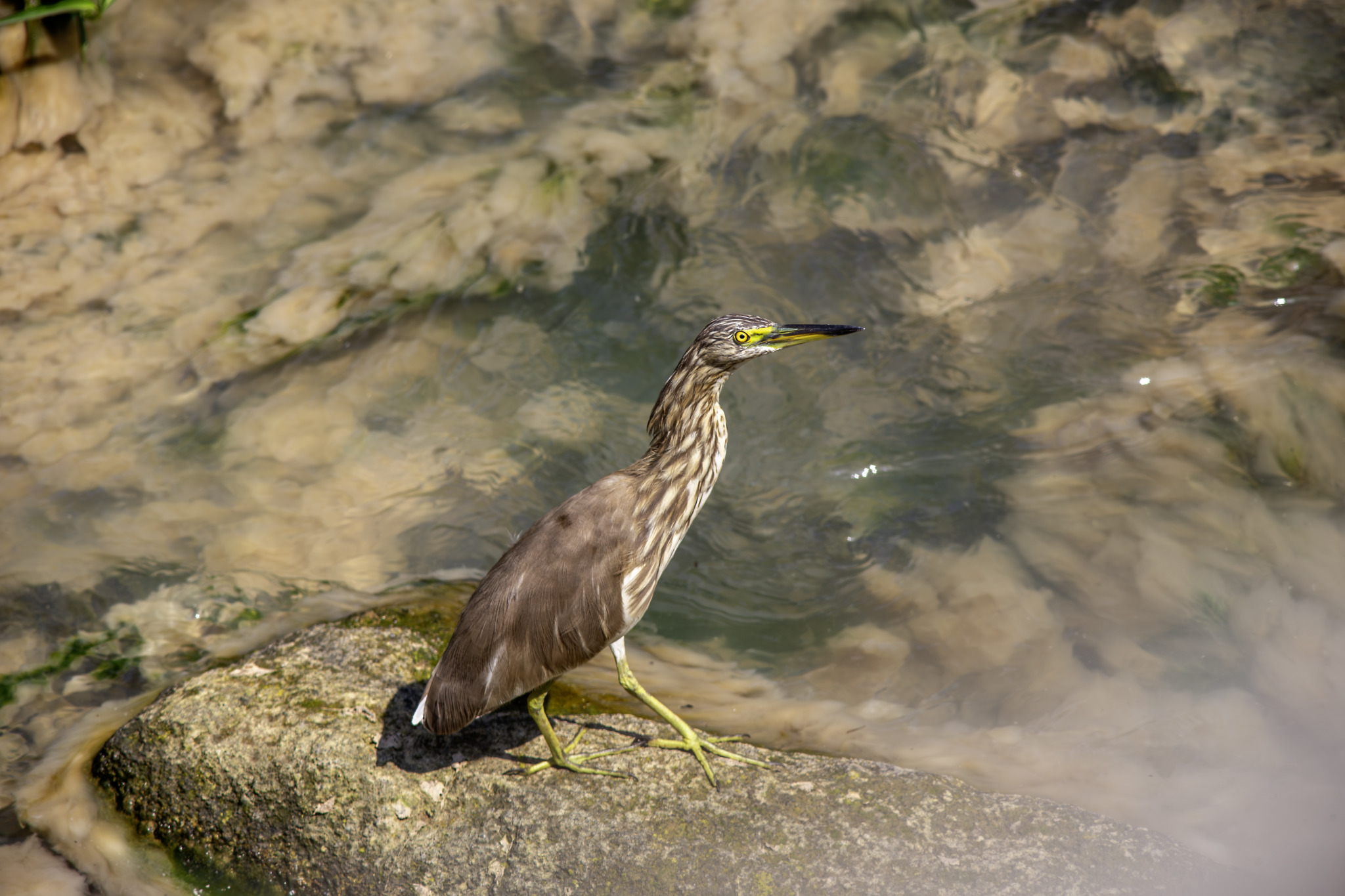The Indian Pond Heron (Ardeola grayii) is a species of heron belonging to the family Ardeidae. Here are some key features and characteristics of the Indian Pond Heron:
- Appearance: The Indian Pond Heron is a medium-sized heron with a compact body and relatively short legs. During the breeding season, adults have striking breeding plumage with a mix of white, gray, and chestnut-brown feathers on the head, neck, and upperparts. Outside of the breeding season, they have more muted plumage, often with grayish-brown or buff-colored feathers.
- Size: Indian Pond Herons typically measure around 40 to 50 centimeters (16 to 20 inches) in length, with a wingspan of about 70 to 90 centimeters (28 to 35 inches). They weigh approximately 200 to 400 grams (7 to 14 ounces).
- Habitat: Indian Pond Herons are commonly found in a variety of wetland habitats, including ponds, lakes, marshes, rivers, and estuaries. They are also known to inhabit agricultural fields, irrigation canals, and urban areas with suitable water bodies.
- Distribution: The Indian Pond Heron is native to South Asia, including countries such as India, Sri Lanka, Bangladesh, Nepal, Pakistan, and Myanmar. It is a resident bird in its range, although some populations may undertake local movements or seasonal migrations in response to changes in water availability and food resources.
- Diet: Indian Pond Herons are opportunistic feeders with a varied diet that includes a wide range of prey items. They primarily feed on small fish, frogs, crustaceans, insects, and other aquatic invertebrates. They are known for their hunting strategy of standing motionless at the water’s edge and striking quickly at passing prey with their sharp bill.
- Behavior: Indian Pond Herons are typically solitary or found in small groups, although larger aggregations may occur at favored feeding sites or roosting areas. They are primarily crepuscular or nocturnal feeders, being most active during the early morning and late evening hours. During the day, they may roost in trees or shrubs near water.
- Breeding: Indian Pond Herons breed during the monsoon season, which varies depending on the region. They build simple stick nests in trees or bushes near water, often in colonies with other heron species. Both parents share incubation duties and care for the young chicks until they fledge.
Overall, the Indian Pond Heron is a common and widespread species in South Asia, valued for its role in wetland ecosystems and its adaptability to various habitats. It is a familiar sight to many people living near water bodies and is an important part of the region’s avian biodiversity.
Visited 420 times, 9 visit(s) today
Views: 518
Subscribe to the newsletter:
